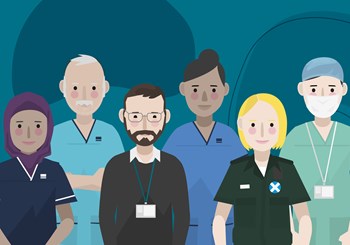Readiness for PrBL: who will deliver and how?


A team approachAll registered and non-registered members of the team can support the delivery of AHP practice-based learning (PrBL), including support workers, practice assistants, students and returners to practice. It is everyone’s responsibility to share and support placements, so involving the whole team in planning can be beneficial. This will also identify whether staff need any support or additional training to participate. There are a range of ways to contribute to PrBL, including providing shadowing/experiential opportunities, masterclasses and project work. |
|
The benefits of a team approach to PrBL (as explained in AHP Principles of PrBL)
|
|
A shared timetable for the placement can help the team and students understand their responsibilities and expectations, support time management for team members, and promote learner independence. |
Models and methods of placement deliveryConsider which model of PrBL will work best for your placement. Clinicians are encouraged to try new approaches with support from Higher Education Institutions and/or local Practice Education Leads if required. AHP PrBL opportunities meet the learner’s learning and development needs across the 4 pillars of practice, with opportunity to develop employability skills and experience local policies and values. This can be achieved by any model or method of PrBL delivery adapted for any service or sector. Models may be mixed to form hybrid placements. Placements can be delivered face-to-face, online, or a blend of both. |
|
Models of PrBL
|
 |
More delivery models can be found on TURAS Learn:
|
Becoming a Practice EducatorPractice Educators host student placements — providing practice-based learning experiences in the practice setting which allow future AHPs to apply their knowledge and skills outside of a classroom across the 4 pillars of practice. By supporting AHP PrBL, Practice Educators develop their own skills, knowledge and confidence throughout their career. |
 |
Resources to help you become a Practice Educator:
|
Practice Educator preparationScottish universities with AHP programmes provide regular Practice Educator preparation sessions which are recommended before taking students. Upcoming dates can be found in this Sway. |
 |
Resources about Practice Educator preparation:
|
The AHP Practice Education Development FrameworkThe AHP Practice Education Development Framework describes the knowledge, skills, behaviours, and recommended learning over 4 levels of practice education experience. All team members can use it to benchmark and evidence their current level of practice education experience, and to access learning and development opportunities. Team or service leads can map the skill mix of their teams across these levels and use the framework in supervision and appraisal discussions to support the development of practice education skills and experience across the team. |



